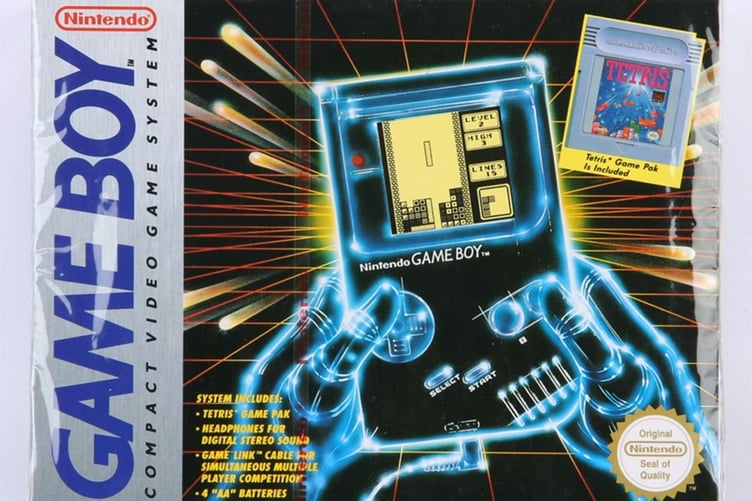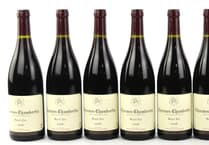RETRO video games and consoles are one of the new collecting fields being celebrated at auction, with Send-based auctioneers Ewbank’s being the first UK saleroom to launch a dedicated department in 2022.
Senior partner Andrew Ewbank oversees sales and has just shared his expertise with listeners on BBC Radio Four’s You and Yours.
Andrew splits his sales into three categories: vintage, retro and modern. This guide shows what defines them:
The Vintage Era (1970s-1980s)
This is the golden age of gaming that began in the very early 1970s with the likes of Computer Space, Atari’s Pong and The Oregon Trail, before moving on to Space Invaders, Galaxian and Asteroids.
The ‘80s started with Pac-Man, Frogger and Donkey Kong. Many of these were only really available at the time through commercial video arcades in the high street, where eager youngsters would hang out and play.
Even in the earliest days of the 1970s, video game consoles were available, including the Odyssey series, Atari Home Pong and the Coleco Telstar series. But by the mid-1970s these began to make way for a whole new generation, when handheld consoles also joined the party as micro-processing led to the introduction of game cartridges, later replaced by optical discs.
Rarities from this era include the RDI Halcyon, introduced in 1985 to support laserdiscs – a technology that led to a dead end, with the console withdrawn. Only a handful survive.
The Nintendo PlayStation (Super NES CD-Rom System) is another, created in partnership with Sony but never actually released. Only one is known to have made it onto the market, a prototype that sold in 2020 for $360,000.
Atari’s Commodore 64, the best-selling computer, was able to operate dozens of games, as was the Nintendo Entertainment System. Rarities include Nintendo’s The Legend of Zelda: A Link Between Worlds, 3DS, and Super Mario Bros, among others.
Ewbank’s also offer associated memorabilia and marketing items, such as magazines and advertising posters.
The Retro Era (1990-2000s)
The retro age offers a wider variety of products from the Atari, Nintendo, Sega, and Sony console and handheld ranges, including Nintendo 64, Sony PlayStation One and Sega Dreamcast.
Rare games include the grey and gold editions of the 1990 Nintendo World Championships, Air Raid, Stadium Events and Red Sea Crossing, whose original form dates back as far as 1983.
Sealed and graded retro games from this period are very popular, with several reaching over half a million in recent auctions. Memorabilia from this era includes figures, figurines and statues, as well as art books and strategy guides
The Modern Era (2010 to present)
Ewbank’s are also interested in offering fully working consoles, games, and oddities from the current generations, including everything from full/complete sets to fully boxed, sealed consoles.
Also included in their sales are bundles or small collections of games from one specific console, such as the Xbox 360 or PS3.
And, as with the other eras, they are looking to augment sales with promotional material such as standees, signed posters and games.
Although the collector fair market for retro video games and consoles is maturing nicely, the auction market is young, so pricing can still be unpredictable and estimates must reflect this.
For the moment prices are largely in the hundreds or below but sell-through rates show that demand is strong and climbing, perhaps aside from the graded games market which has shown falls recently. Inevitably, this means that prices will rise again – and are likely to do so quickly.
Add to this the fact that as gamers age they become more nostalgic and generally have more disposable income to invest in this sector – and that as time goes by, surviving games in fine condition are harder to find – and you have the perfect conditions for a promising collecting field.
Ewbank’s is the first UK auctioneer to recognise the importance of catering to this collecting base by launching a dedicated department to retro video games and consoles.
“At Ewbank’s we believe that developing new expertise and getting in on the ground floor with new collecting disciplines is vital to the long-term health of any auction business,” said Andrew.
“Equally important is ensuring that we give our clients what they want, which is why we prioritise areas like this. They are as important to new generations of collectors as fine furniture with a premium patina has long been to those who came before.”
What are the most sought-after brands and games?
In terms of brands, in general terms Nintendo has to be the front runner. There are so many systems across decades of the history of gaming that there are popular releases across all platforms. Right now, Ewbank’s is seeing lots of interest in Nintendo Game Boy and N64 titles.
Also, now increasingly popular are early PlayStation 1 and 2 titles. There are the ‘holy grails’ out there too, of course, the titles limited to very small release runs or never commercially released.
For example, there are only a dozen examples of a version of Tetris believed to have been made for the Sega systems (due to rights issues) and held only by the development team. A copy of this could set you back tens of thousands of pounds.
What else is there to collect in this field?
Alongside games and consoles are the collectables that were used to promote the releases, from the likes of Zelda in-store standees to Mario models. There is a wide variety of gaming collectables out there. Another interesting area in a related field of collecting is computing; early Apple products in particular can be incredibly popular.
What can affect price?
The biggest drivers of price are factory-sealed versus opened, and condition. A sealed version of a game will always fetch more and having contents, such as manuals, present on opened products helps to achieve the best prices. The health of the economy can also affect prices, as people have less disposable income. But the pool of buyers is growing, and those people who are in their 40s and grew up playing consoles and gaming systems tend to have more money to spend as they grow older.
The nostalgia effect is also very important. In terms of the gaming industry as a whole there is no doubt that it is a massive industry, and retro games and consoles benefit from the interest in gaming overall. These are the antiques of the future for this young market.
Anything you need to be aware of or avoid?
Do your research and ask questions of the seller. All reputable auction houses offer the opportunity for buyers to ask for condition reports and additional images. Be careful of user-to-user direct private-selling sites and be sure to buy from trusted sellers if you use them. Most importantly, buy what you love – buying anything purely for investment can be risky, in particular with young markets like this, which can swing relatively quickly.
Buying what you love means that you are engaged with the products in a way that you cannot beat, and this only helps with making the best decisions for you.
Don’t forget to have fun while you’re at it. Buying at auction is fun and what could be more fun that buying your favourite game from your youth?





Comments
This article has no comments yet. Be the first to leave a comment.